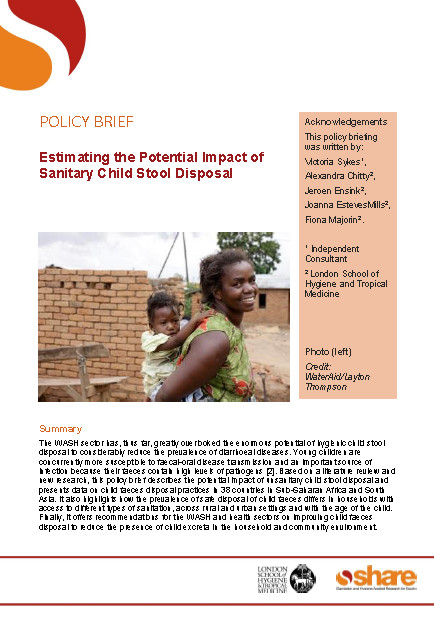Estimating the Potential Impact of Sanitary Child Stool Disposal: Policy Brief
 |
note Apr 2015 ; 14 pages
Ed. SHARE - London
Téléchargeable sous format: PdF
Téléchargeable chez l'éditeur
Abstract:
The WASH sector has, thus far, greatly overlooked the enormous potential of hygienic child stool disposal to considerably reduce the prevalence of diarrhoeal diseases. Young children are concurrently more susceptible to faecal-oral disease transmission and an important source of infection because their faeces contain high levels of pathogens.
Based on a literature review and new research, this policy brief describes the potential impact of unsanitary child stool disposal and presents data on child faeces disposal practices in 38 countries in Sub-Saharan Africa and South Asia.
It also highlights how the prevalence of safe disposal of child faeces differs in households with access to different types of sanitation, across rural and urban settings and with the age of the child. Finally, it offers recommendations for the WASH and health sectors on improving child faeces disposal to reduce the presence of child excreta in the household and community environment.
The JMP (2006) classified sanitary disposal of children’s faeces as:
1. Disposal of faeces in the toilet/latrine
2. The direct use of toilet/latrine by the child
3. Burial of faeces
Mots clefs: |
Editeur/Diffuseur: |
|
SHARE
-
Sanitation and Hygiene Applied Research for Equity - London - Royaume Uni |
En cas de lien brisé, nous le mentionner à communication@pseau.org